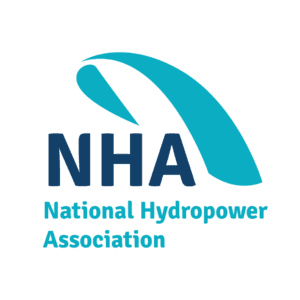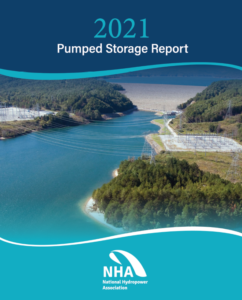 NHA Unveils New 2021 U.S. Pumped Storage Hydropower Report
NHA Unveils New 2021 U.S. Pumped Storage Hydropower Report
America’s large source of grid-scale energy storage grid will play a key role in meeting ambitious clean energy goals
Washington, D.C. (9/22/21) – On World Energy Storage Day, the National Hydropower Association (NHA) today released the 2021 Pumped Storage Report, a comprehensive review of the U.S. pumped storage hydropower industry. In addition to providing the history for PSH, the report outlines the challenges facing the renewable resource, and provides policy and regulatory recommendations for its future development. Despite pumped storage providing 94% of bulk energy storage capacity in the U.S., adding more wind and solar generation requires greater amounts of storage and operational flexibility to assure grid resilience. The combination of increasing variable renewable resources and the retirement of fossil fueled dispatchable capacity makes pumped storage the unique proven technology that can provide clean energy, flexibility and storage.
“Pumped storage hydropower has proven to be America’s most effective resource for long-duration energy storage,” said Cameron Schilling, NHA’s Vice President of Market Strategies and Regulatory Affairs. “The acceleration of wind and solar deployments underscores the increasing need to integrate large amounts of variable resources. This report shines a spotlight on the value of pumped storage, while providing a path forward for solving the market, policy and regulatory hurdles that hinders its growth. In addition to financing, for pumped storage to fully realize its growth potential, it requires market policies that appropriately value its grid services.”
The Report delves into current challenges to pumped storage developments, including the regulatory complexity and delays, electricity market structures that undervalue pumped storage’s contributions to the grid, and unfair treatment within state and federal policies. The Report also includes an energy storage technology cost comparison, and identifies opportunities for collaboration with variable energy resources such as wind and solar.

CLICK HERE TO DOWNLOAD 2021 PUMPED STORAGE REPORT
About Pumped Storage Hydropower
PSH, can act as a “water battery” and help alleviate the tandem challenge of integrating a growing amount of variable renewable resources into the grid while maintaining reliability. It generates power the same way a traditional hydropower plant does, by using a turbine and generator to transform the kinetic energy of falling water into electricity, but with an added feature. A PSH plant can pump water to the upper reservoir and store it for later use. That gives PSH the flexibility to inject power into the grid or to absorb it when needed. Both functions are becoming increasingly important for grid stability and reliability.
Today, the United States has 43 existing PSH projects with over 22,800 megawatts of storage capacity, representing more than 94% of all installed capacity of energy storage. In the U.S. development pipeline, there are 67 PSH projects across 21 states representing over 50 GWs of new long duration storage.
The National Hydropower Association (NHA) is a nonprofit association dedicated exclusively to promoting the growth of clean, renewable hydropower and marine energy.


